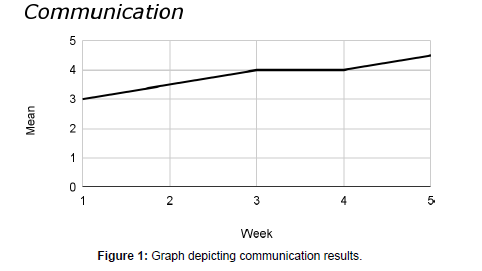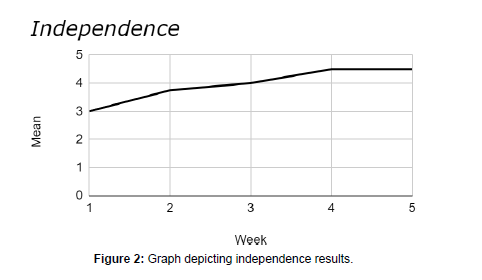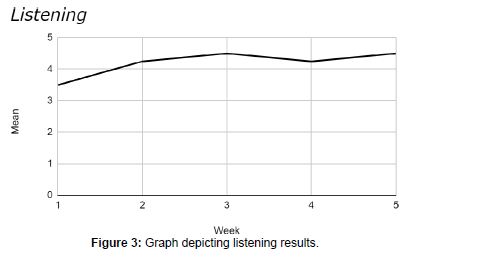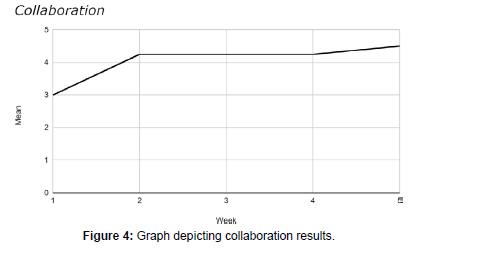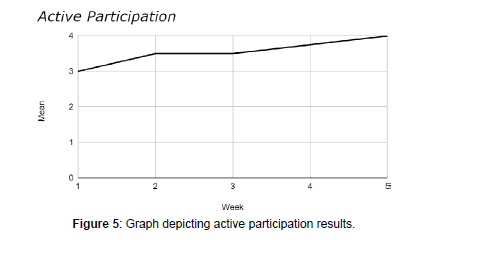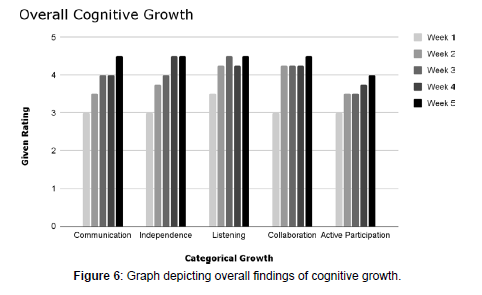Cognitive Functioning within Autism Spectrum Disorder Adolescents through a Study of Basketball Interaction
Received: 01-Nov-2023 / Manuscript No. jcalb-23-107560 / Editor assigned: 04-Nov-2023 / PreQC No. jcalb-23-107560 (PQ) / Reviewed: 22-Nov-2023 / QC No. jcalb-23-107560 / Revised: 27-Nov-2023 / Manuscript No. jcalb-23-107560 (R) / Published Date: 30-Nov-2023
Abstract
This paper evaluates the effectiveness of sport intervention in basketball and its ability to aid in cognitive development and communication in adult transitioning students with autism spectrum disorder (ASD). The use of basketball as an intervention supplies the necessary cognitive skills to allow students to enhance their brain in developing the skills to a greater extent. Therefore, this study intended to provide further research on its effectiveness with students diagnosed with ASD, as it is a brisk growing disorder that challenges individuals cognitively and socially. This study’s basketball technique provides students with autism between the ages of eighteen to twenty-two with an improved internal and external awareness of boundaries, indicating cognitive advancement. A teacher observational- survey-based approach facilitated the experiment’s results as they gave a general understanding of the cognitive development result from the daily basketball practices. This study is most useful in conjunction with other studies examining the implementation of sports intervention dedicated to students with autism to help the transition toward adulthood.
Keywords
Autism spectrum disorder; Communication; Cognitive functioning; Social disabilities; Adult transitioning students; Basketball
Introduction
In the past fifty years, various cognitive interventions for students with slow cognitive growth have created an environment different from the traditional special educational (SpEd.) model. These developments intended for children with disabilities to optimize their overall progression in both cognitive and social skills, overall aiding their futures. Basketball is a sport used as an intervention among these developments that allows the student to progress their social cues and motor skills through various activities within basketball that provide both peer and individual autonomy in their progression. Basketball can be played individually or in a group setting and involves a ball being thrown into a netted hoop. This intervention method furthers the student’s ability to be autonomous, understand their external environment, personal warmth, and empathy with peers. Basketball interventions advance the socialization process for students as they are able to interact with peers in a more comfortable environment. Autism Spectrum Disorder (ASD), a developmental disorder, causes difficulty in communication development; it can also involve patterns of behaviors that leave individuals to be demented on certain issues as a coping mechanism from the stimuli that disrupted their mental state [1]. In examining the setting that basketball may provide, a correlation may become apparent between the activities indulged and the response that it may elicit from an autistic student. Thus the research question becomes prevalent: To what extent, if at all, can we enhance cognitive functioning in adult-transitioning students with ASD through basketball? The study of this question determines how optimal the method of basketball is in guiding autistic students in an educational environment. The student’s ability to develop their individual limits and recognize their external actions within a basketball environment will measure the effectiveness of this sport intervention.
Literature Review
This section will analyze the current literature regarding the use of basketball in SpEd classrooms of adult transitioning students and its effectiveness in providing ASD students with enhanced cognitive growth implicated in their adult life. The review of these sources in this section will provide a detailed background of the science behind basketball and the daily struggles of ASD students. This review sets a precedent for the disparity analysis regarding how an ASD student’s cognitive development may change by implementing basketball into their educational environment.
Science of basketball
Basketball is a high-level performance sport that deals with multiple processes occurring cognitively and physically with various interactions between the “technical, tactical, fitness, and anthropometric characteristics of a player” [2], as Jaime Sampaio and his colleagues from the University of Trás-os-Montes defined. Additionally, this is a team sport that focuses on the actions between the players of both teams involved and determinants such as point scoring is a vital component. Players have to utilize skills such as motor abilities, cognitive functioning, and social communication skills, as this involves independent and team effort in each individual [3]. Furthermore, these skills are applied through the control of the ball and motor execution when scoring points that require the use of major cognitive decisions while playing. The role of cognitive functioning within the mind increases as one plays the sport frequently with the aspect of muscle memory. In addition to being a team sport, it also requires the ability to properly retrieve information and communicate information with the other players, thus focusing on the social communication aspect of this sport. Through “cognitive decision-making and control components of performance,” basketball knowledge and practice are seen as key predictors in improving these cognitive abilities within individuals through a neurological aspect [4]. Additionally, the interactively inclined sport adapts a cognitive mindset beyond the gym setting, leaving students to explore outside environments while still applying the cognitive benefits of basketball influential to them. ASD is defined by the deficits in social reciprocity, nonverbal communicative behaviors used for social interaction, and skills in developing, maintaining, and understanding relationships, according to The Diagnostic and Statistical Manual of Mental Disorders, Fifth Edition (DSM V) [5]. Thus, as these students lack the essence of proper cognitive functioning across varying levels, basketball is essential to create an interactive guide for adoption to set developed cognitive functioning while providing a fun environment that does not intrude on the student’s self-established learning path. Evaluating the efficiency of Basketball provides reasoning for why many students in general tend to have increased growth in a basketball environment. However, it is essential to acknowledge that Basketball has not been as extensively proven to improve the cognitive development of a student with ASD.
Age cohorts v theory of mind
Younger children with ASD function on a highly different level than young adults with ASD would. The Theory of Mind (ToM) proposes that it is defined as the theory in which individuals are able to process thoughts, emotions, and feelings through a dramatic change in childhood [6]. As stated by researchers, Hilary Richardson and Rebecca Saxe from the Department of Brain Sciences, ToM development in childhood is essential for determining any change that has occurred in specific brain regions such as the temporoparietal junction, which influences social cognition performance, thus creating this cognitive aspect in neurology to determine the shaping of the brain both through neuroscience and behavioral perspective. This theory has been applied in determining impairment within ASD childhood intervention and how the ToM elements apply to the cognitive function and central coherence of social manifestations presented by Yael Kimhi, who has a Ph.D. in Education [7]. There have been numerous arguments on the evaluation of ToM and the application of this towards developmental periods. In addition, it has a huge effect on age cohorts, and the results are based on certain areas of developmental periods in a growing ASD individual’s state. Although several studies have applied this sports curriculum of basketball to younger individuals with ASD, ToM has evaluated that due to the differentiation in developmental periods, different results might occur among adolescents. In a cross-sectional study done by researcher Micheal Rosenthal and his colleagues from the University of Nebraska Medical Center analyzed autism between childhood and adolescence, involving the investigation of developmental trajectories of functioning in ASD individuals, with different age cohorts, results varied based on developmental stages. ASD children who are in the more developed period, particularly adolescents, were seen with higher quantities of functioning deficiency compared to younger children with ASD such as preschoolers. This shows a negative correlation between age cohorts on adolescents, as implications of challenges are seen in adolescents as they enter the mainstream work environment after schooling [8]. Therefore, emphasizing the implications and differentiations related to ToM when looking at multiple developmental periods and analyzing the effect of one experiment that might have various results on different age cohorts is essential to focus on reaching the proper needs to support ASD students.
Brain plasticity within physical exercise
The impact of physical exercise within the development of an ASD brain alters cognitive functioning physically causing this development of improved cognition. Brain plasticity, which refers to “plastic changes to the brain structure and function,” has been observed among players and athletes involved in various sports (Kim et al, 2022, p.20). Ji Hyun Kim and his colleagues from the Department of Anatomy, in the College of Medicine, experimented through various sports on the effect of brain plasticity change in regard to the different regions that were engaged within the neural structure. Through laboratory reports and further detailed analyses, it was found that within basketball, there is a present increase in cerebellar volume specifically in basketball players, and an increase in the striatum and vermian lobules VI-VII within the cerebellum were observed. Additionally, the use of automated MRI brain analyses techniques, such as the usage of fractal dimensional analysis, showed both an increase in the precentral gyri, which controls the motor and sensory interventions as well as an increase in the right posterior cingulate gyrus, which involves the processing of emotion, motor, and autonomic motor function regulations [9]. These findings portray that playing basketball improves the brain physically as well through the increase in brain plasticity and multiple regions of the brain regarding motor and cognitive functioning linking the functional neuroanatomy to basketball. There is no current research regarding improving cognitive challenges presented with ASD beyond intervention plans and changes in learning methods. Therefore, leaving the opportunity to further the body of knowledge in recognizing a sports environment that will sufficiently facilitate the intervention methods needed to aid ASD students in their cognitive development.
Overview
There is yet to be significant research that theorizes an extensive environment that targets the developmental symptoms of ASD. However, expanding the resources and environment that basketball provides may contribute to the body of knowledge regarding ASD and cognition beyond the school age. The research question: To what extent, if at all, can we enhance cognitive functioning in adulttransitioning students with ASD through basketball? The study of this question emphasizes the potential of Basketball to increase cognitive functioning in an ASD student’s mind. It focuses directly on how the interactions in basketball may remedy the developmental symptoms of ASD. Examination of this gap will provide more information of ASD individuals going through the adult transitioning phase between completing their education and entering the workforce to make informed decisions that will ultimately benefit their cognitive development and, consequently, their futures.
Methods
This study demonstrates the application of a teacher observational design study, the use of a qualitative approach was applied by observing the adult transitioning students with ASD within the SpEd program, in which the observation of daily interactions with basketball and the growth of social and cognitive skills was applied. The observation of general behavior changes of the students took place through the teacher’s perspective and was translated through a qualitative analysis in a weekly form. This section will explain how basketball was incorporated and examined within the research approach to respond to this sport method. A chronological outline of the procedure, along with the exact gathering of data, is outlined within this section. Additionally, the study is valid due to the ethical practices and confidentiality standards in this section.
Variables
Within this research, the independent variable is the general behavior of autistic students in an educational setting. The main purpose of this study is to see if at all basketball interaction will improve any form of cognitive development within high-functioning students with ASD. On the other hand, the dependent variable is the cognitive development within ASD students which was influenced by the basketball interaction method.
Ethical considerations
To execute this study, the Katy Independent School District (ISD) International Review Board (IRB) approved my experimental method and design (see appendix B). This approval ensures that my method followed all ethical measurements to maintain the privacy of the teacher’s responses and the autistic student’s behaviors. This study’s ethical practices follow the guidelines of ethics to ensure every individual related to this study is comfortable and allows for safe results.
Method
This method provided qualitative data by monitoring cognitive behaviors which included the observation from the teacher’s perspective of the student’s general behavior in a group setting and a compilation of responses from the form given to the teachers at the end of each week for five weeks. Then I took these responses from the teachers to convert the qualitative data to quantitative measurements to analyze the improvement in their general behavior, in order to draw a proper conclusion about the impact of basketball interaction and the development of cognitive skills within high-functioning ASD adolescents.
Participants
Participants were four teachers who instructed Adult Transitioning students with ASD from the Special Education Developmental (SPED) program within my campus. Each participant received equal treatment within participation in the study. The teacher participants signed the informed consent form before any participation in the study took place.
Instruments
For this design, a google document, graphs, and google forms were used in this study to collect, organize, and analyze data. The google document was used to organize the data collected from the observational responses from the weekly form and to record and analyze the data received through graphs to determine a possible increase or decrease in cognitive growth. The form included questions consisting of scales of 1-5 (range consisted of 1 being the lowest and 5 being the highest in terms of improvement) with communication, independence, listening, collaboration, and active participation; teachers were asked to rate these categories based on their observations of the general behavior of their students during that week.
Procedure
Teachers were given the informed consent form before any action on this study took place (see Appendix B). Each teacher participant received a weekly survey that was given via email on Friday and was asked to be completed before the start of the next week. This survey was moderated through Google Forms (see Appendix A), and the date was presented; however, no details of any students were given as this was analyzing the general behavior in an educational setting. Additionally, observations that the teachers want to state were also given as the last question in the survey, and the same survey was sent out every week for a total of 4 weeks. After the one-month period of data collection had been completed, a period of debriefing occurred as participants were informed of the true nature of the study while other participants’ results were kept confidential without any identifiable characteristics being shared.
Findings
Mean values
Cognitive functioning was calculated based on the survey responses each week from the four teacher participants involved. The maximum mean value a category would receive was five. The cognitive functioning improvement was calculated by taking the mean of each category involved in cognition. Categories involved include communication, listening, active participation, independence, and collaboration. These categories were the basis of students proving cognitive improvement as these five categories are all regulated within the frontal lobe of the brain which is involved with cognitive processing. The developmental subsections within the frontal lobe include the prefrontal cortex which includes motor control, emotion, and language, the motor cortex which is involved in coordinating movement, and the Broca’s area which controls the production of language. Students demonstrated their improvement of cognitive functioning by playing basketball daily as part of their curriculum within the SPED program. The inclusion of the rating of these five categories emphasizes the plausibility of growth related to the neuroanatomy of basketball. This growth was further proven by additional observations within the classroom after students played basketball that day.
Communication
Please reference Figure 1 to view the graph of the communication growth only. This graph depicts the mean growth of communication over the five weeks. Combining all these data values into one graph creates a visual representation of a gradual increase in communication over the five weeks potentially due to the activity of basketball interaction.
Independence
Please reference Figure 2 to view the graph of the independence growth only. This graph depicts the mean growth of independence over the five weeks. Combining all these data values into one graph creates a visual representation of a gradual increase in independence over the five weeks potentially due to the activity of basketball interaction.
Listening
Please reference Figure 3 to view the graph of the listening growth only. This graph depicts the mean growth of listening over the five weeks. Combining all these data values into one graph creates a visual representation of a gradual increase in listening over the five weeks potentially due to the activity of basketball interaction.
Collaboration
Please reference Figure 4 to view the graph of the collaboration growth only. This graph depicts the mean growth of collaboration over the five weeks. Combining all these data values into one graph creates a visual representation of a gradual increase in collaboration over the five weeks potentially due to the activity of basketball interaction.
Active participation
Please reference Figure 5 to view the graph of the active participation growth only. This graph depicts the mean growth of collaboration over the five weeks. Combining all these data values into one graph creates a visual representation of a gradual increase in active participation over the five weeks potentially due to the activity of basketball interaction.
Overall cognitive growth
The overall cognitive growth with the five categories combined can be viewed in Figure 6, which shows the increase within each category, and the combination of all five shows an overall increase in cognitive growth as there is a positive linear relationship of related mean values in all categories as the weeks progressed.
Analysis
This section analyzes the mean values communicated by each teacher participant to understand the better correlation between daily basketball interaction and the general cognitive behaviors developed by students. These themes are evaluated through ASD as a learning disability and basketball interaction as an overall physical activity in modern-day society. Additionally, exploring the connections between the themes provides practical knowledge to the gap in this research regarding adult transitioning students with autism and the general cognitive developmental responses to basketball interplay. The compassion of different categories within the field of cognition and the growth in the frontal lobe and the different mean results gained each week intends to establish a conclusion regarding the involvement of basketball intervention in daily activities among adult transitioning autistic students.
Presentation of introspection
Students with ASD often have difficulty distinguishing characteristics that occur spontaneously through the actions occurring in their daily life [7]. Some students with ASD process visual interventions more easily than other communications; however the education system of the ASD student should be in comfort with each preferred style when determining the use of a specific intervention. These factors became apparent within the first week of all five categories of cognitive growth. The first week had very low mean values as the students were first starting basketball before practicing daily. The opposite, however,was demonstrated towards the fifth week, which is a much higher mean increase in overall cognitive growth. As the students were able to recognize and make connections between the basketball and the hoop and the processes that occurred during making a ball inside the hoop. The student’s overall class performance was much higher in the capability of interpreting events that happen spontaneously as they occurred, giving the improvement of listening and active participationtwo main cognition factors that evolve with attainment towards selfrecognition of actions. The disparity does not appear consistently within every student, and it is essential to take into consideration that while some students have developed at an increase in cognition other students might be going at a slower rate [8]. The students that were involved with the momentum of progress that is apparent in week 5, could acknowledge their recognition of personal progress. Additionally, it is crucial to acknowledge the surrounding factors throughout the environment, as if the student chose to acknowledge that actions that take place reflect their environment as well. To account for the range, students might understand that the environment they play in will have other students present, so aspects such as recognizing that hitting a ball in the direction of another student might hurt that student, and prevent them from committing to that action. This self-realization and connection that is developed throughout this basketball intervention, improved self-recognition and the ability to introspect one’s actions. Basketball intervention intends to account for any developmental implications, such as introspection and awareness of the environment by making these vital connections that are a part of the developmental process. However, this study recognizes that with the implementation of basketball, students were more capable of portraying responsibility for their actions such as hitting a person with a basketball or throwing the basketball properly into the hoop, which is a crucial stage in their cognitive development.
Physical cognition growth
Impairments in cognition portray one of the primary symptoms of ASD. The neural mechanism that was involved in the overall cognitive growth between the five weeks of the study was based on white matter integrity (WMI) in students with ASD [9]. During the basketball study, there was an observed increase in cognitive functioning seen by the positive linear increase in the graph (Figure 6). Compared to ASD students who did not participate in basketball there was an increase in cognition to the students who play basketball daily during their gym class. Neurologically there is an increase in WMI in the basketball group as scientifically, there is a positive connection between the WMI in the Broca’s area and the motor cortex, and the cognitive growth within ASD students. Especially with physical intervention and its effect on age cohorts, the improved results have a connection to the implementation of sports practices resulting in physical brain development causing cognition to improve [10]. Therefore, acknowledging the impact that basketball can make on the brain’s WMI and physical growth of various parts of the brain, as seen in the results of this research, the importance of further examining the intervention and its implications in all educational environments becomes crucial.
Interpersonal relationships
The students playing basketball-observed by the teacher-would go into the gym daily as they voluntarily chose to play basketball, however, most played with other peers, while some remained to play independently. The generalized group setting is facilitated by the student’s voluntary decisions, designed to observe the student’s social ability by the teachers in the gym. There was no designated plan for the students playing basketball; however, most of the skills that were developed arose from the students that chose to play with their peers. The whole group setting is composed of a fusion between low-functioning and high functioning end students of the autism spectrum. When these students all played together, it forced students to work in a group setting respecting everyone’s comfort and safety, thus developing a higher level of social ability for these ASD students. Normally, students with ASD face huge struggles when attempting to interact with their peers with ASD as well, but when students are placed in a play environment that causes skills to automatically develop, an effective social interaction, thus furthering the development of student’s social abilities [11]. Social skill development is crucial to assess within any intervention methods for ASD students. This small group setting that was formed during basketball, helps ASD students apply these same skills adapted in basketball group settings, towards other reallife situations, and in any relationships engendered. Thus, the genuine forming of social groups in the basketball environment acknowledges the study’s practicality in an educational setting. Additionally, the forming of groups causing an essence of teamwork in basketball did improve social ability. A majority of the students who played actively in the basketball setting were observed by the teachers to be constantly engaged in meaningful conversations with other peers and improved communication throughout the classroom. These conversations portrayed that ASD students were comfortable discussing respectful things and speaking about their actions towards another person, proving an improved set of social skills. ASD students who participated in basketball, improvements in social ability in both communication and collaboration were present, as were the teacher’s observations and conversations regarding their individual growth in basketball that day. It is important to recognize that socialization with ASD growth goes beyond just conservations and human interaction, but also the ability to collaborate and make important decisions within their surrounding without any harm to others. Thus, recognizing another way basketball can be more foremost in increasing the growth of interpersonal relationships and social growth for ASD students.
Conclusion
The developmental improvements in communication, listening, active participation, independence, and collaboration, are determined under the scope of cognitive functioning through the data analysis maintained with the survey method. The data gathered from the expression of the teacher’s observations involved in the experiment provides insight into the students with ASD’ receipt of the enhanced developed impact from the basketball play. The experiment results demonstrated that the practice of basketball does have the ability to aid the cognitive development of adult transitioning students with ASD, leaving them to exhibit improved cognitive ability when involved in basketball activity. Basketball guides the student’s choice of understanding and operating various functions within the frontal cortex and helps assess the skills of cognition that can be applied in other environments. Therefore, exploring the impact of basketball on students with ASD leads to a correlation between the successful cognitive development of ASD students and their involvement in basketball. The findings of this study require further explorations to examine different adaptations of the sports practice, other age groups of individuals with ASD, and legislative perspectives on incorporating basketball play into the curriculum.
Limitations
Only one procedure was conducted to determine if the basketball method was effective for adult-transitioning students with autism. The observation design limits the research conclusion as the basketball process recommends that tasks be adapted to each individual with ASD. Thus supporting the students in aiding with cognitive development. The choice to not include other forms of developmental cognition may have also contributed to the general entertainment of play to the student. The child’s form of basketball as entertainment is an essential limitation as the basketball method provides students with many cognitive impacts. Additionally, this study was limited by the fact that the observations were not observed with face-to-face interaction due to ethical liabilities, but through the general observations observed by the teachers within the behaviors in the classroom, thus generating unintentional bias with the participating teachers through the quantitative responses. Although students voluntarily played basketball as part of the mandatory gym curriculum for ASD students, not many students participated in basketball specifically and this was only seen within one high school within the observed span of five weeks. Thus, the study was limited as it was a short period of observation without direct interaction. The uncontrolled action of how the students played basketball, an indirect observational method, and the small population who actually participated in basketball could have hundreds of the results of the limitation in basketball impact as well as produced unconscious bias. Therefore, the concluded results may have a different interpretation if this study had fewer limitations.
Future Implications
This research contributes to a new conversation regarding how we can expand intervention into the education curriculum of sports intervention for students with autism. This study facilitates this conversation by establishing the implication of basketball play towards the improvement of cognitive development of students with ASD. Thus, setting the impact of simulating a basketball-led environment in municipal SPED programs throughout schools with the K-12 education system as well as special training with coaches and teachers. Including the basketball, the play implies that SPED programs can alter how the play can be towards the types of ASD students and can adopt a different framework to accommodate each child’s situation and preferences well suited. An application of basketball play expands intervention methods across plausible sports for the cognitive development of ASD students in an educational setting toward positive reinforcement in the future workforce as an ASD individual. Exposure to intervention within an academic environment may improve functioning in ASD students’ daily life in adulthood and joining a work environment. A legislative analysis of SPED systems contributes to a better understanding of allocating resources in support of the cognitive development of students with ASD by exploring implementing basketball play in the public K-12 system. Additionally, the focus on basketball makes this research accessible to the community of autism. Therefore, including individuals with ASD in the conversation about implementing interventions within the education system through the SPED programs allows for the acknowledgment of a better understanding from a first-person perspective, and allows for a clear scope of addressing any concerns that may arise. Including the autistic community itself would make the research more accessible and allow families to choose different intervention methods for their child, leading to more interest and support regarding any improvement to SPED programs. Future research regarding how individuals with autism respond to the basketball methods must prioritize the implementation of the basketball pay within school curricula. The research in this area of study must include the legislative perspective, staff perspective, and the involvement of the autistic community to continue the logistics and practicality of this research that contributes to this body of knowledge.
References
- Benson RS, Young ML, Akaka J, Bernstein CA, Crowley B, et al. (2013) Diagnostic and statistical manual of mental disorders Fifth Edition. American Psychiatric Association.
- French KE, Thomas JR (1987) The relation of knowledge development to children’s basketball performance. Journal of Sport Psychology 9: 15-32.
- Harper CB, Symon JBG, Frea WD (2007) Recess is time-in: using peers to improve social skills of children with Autism. Journal of Autism and Developmental Disorders 38: 815-826.
- Kim JH, Park JW, Tae WS, Rhyu IJ (2022) Cerebral cortex changes in basketball players. Journal of Korean Medical Science 37.
- Kimhi Y (2014) Theory of mind abilities and deficits in Autism Spectrum Disorders. Topics in Language Disorders 34: 329-343.
- Richardson H, Saxe R (2020) Early signatures of and developmental change in brain regions for theory of mind. Neural Circuit and Cognitive Development 467–484.
- Robertson AE, Simmons DR (2015) The sensory experiences of adults with Autism Spectrum Disorder: A qualitative analysis. Perception 44: 569–586.
- Rosenthal M, Wallace GL, Lawson R, Wills MC, Dixon E (2013) Impairments in real-world executive function increase from childhood to adolescence in autism spectrum disorders. Neuropsychology 27: 13.
- Sampaio J (2022) Basketball Modelling and simulation in sport and exercise 108–126.
- Meadan H, Ostrosky MM, Triplett B, Michna A, Fettig A (2011). Using visual supports with young children with autism spectrum disorder. Teaching exceptional children 43: 28-35.
- Herold F, Zou L, Zhu LN, Xiong X, Chen AG (2020) Effects of Mini-Basketball training program on executive functions and core symptoms among preschool children with Autism Spectrum Disorders. Brain Sciences 10: 263.
Indexed at, Google Scholar, Crossref
Indexed at, Google Scholar,
Indexed at, Google Scholar, Crossref
Indexed at, Google Scholar, Crossref
Indexed at, Google Scholar, Crossref
Citation: Kondapi A (2023) Cognitive Functioning within Autism Spectrum DisorderAdolescents through a Study of Basketball Interaction. J Child Adolesc Behav 11:580.
Copyright: © 2023 Kondapi A. This is an open-access article distributed underthe terms of the Creative v Attribution License, which permits unrestricted use,distribution, and reproduction in any medium, provided the original author andsource are credited.
Share This Article
Open Access Journals
Article Usage
- Total views: 461
- [From(publication date): 0-2023 - Mar 14, 2025]
- Breakdown by view type
- HTML page views: 338
- PDF downloads: 123

